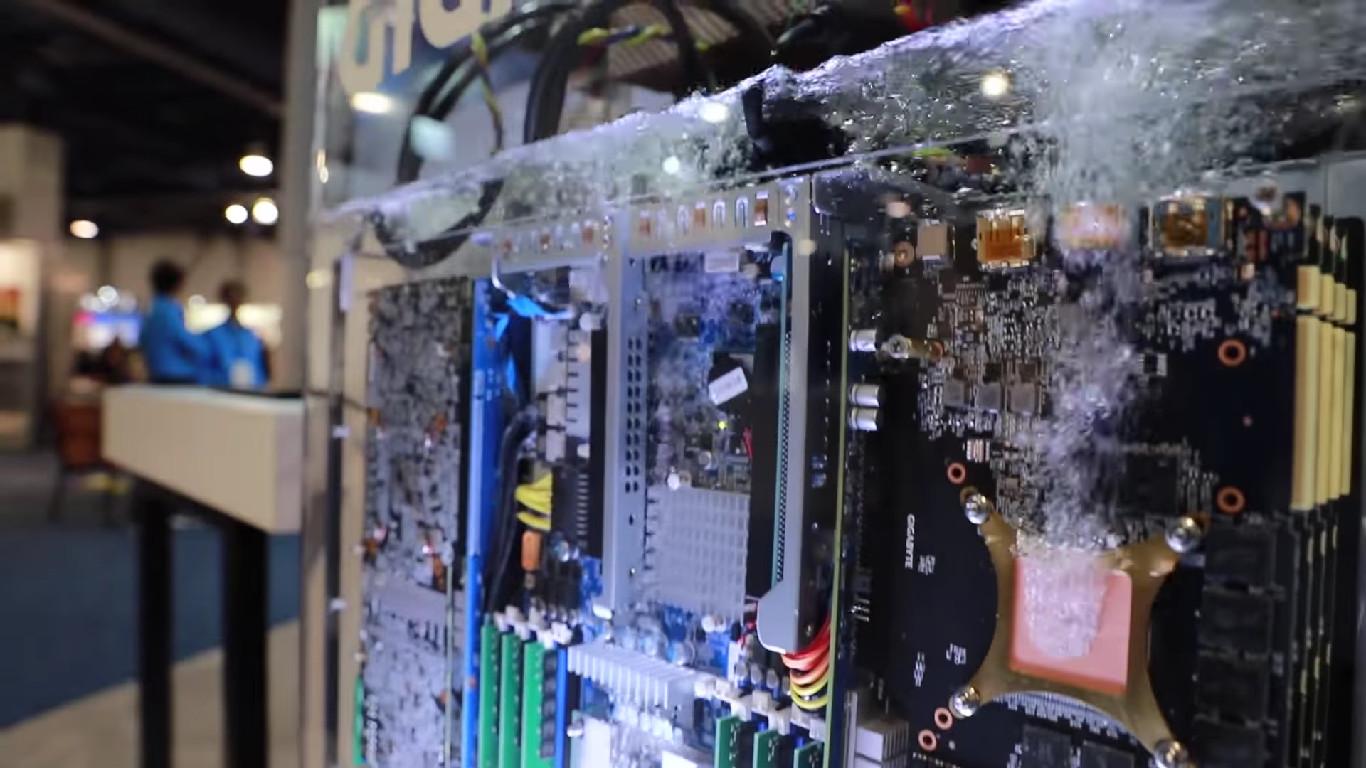Immersion Cooling 2025: Revolutionizing Data Center Efficiency and Sustainability

Immersion cooling technology is swiftly transforming data centers by offering advanced, energy-efficient cooling solutions critical to handling the growing demands of artificial intelligence (AI), high-performance computing (HPC), and cloud workloads. Unlike traditional air cooling, immersion cooling involves submerging servers in dielectric liquids that absorb heat directly, enabling significantly improved thermal management, reduced energy consumption, and increased hardware density. As data centers strive to lower their carbon footprint and operational costs, immersion cooling emerges as a strategic innovation enabling sustainable and scalable infrastructure expansion in 2025 and beyond.
According to Straits Research, the global immersion cooling segment in data centers was valued at USD 426.56 million in 2024 and is expected to grow from USD 528.13 million in 2025 to reach USD 2,915.98 million by 2033, expanding at a compound annual growth rate (CAGR) of 23.81% over the forecast period (2025–2033).
Major Trends and Innovations Driving Immersion Cooling Growth
The immersion cooling industry is being propelled by several critical trends. Increasing rack power densities—driven by AI and machine learning workloads—are pushing existing air cooling methods beyond their limits. Immersion cooling allows data centers to operate servers at densities 10 to 15 times higher within the same physical footprint, augmenting computing power without costly facility expansions.
Sustainability goals are also accelerating adoption, as immersion cooling can reduce energy use by up to 50% compared to air cooling by eliminating fans and chillers, significantly cutting carbon emissions and operational costs. Advanced dielectric fluids designed for single-phase or two-phase cooling deliver superior heat transfer while being environmentally friendly.
Additionally, AI-powered thermal management systems optimize cooling efficiency in real time, helping data center operators reduce hot spots and improve PUE (Power Usage Effectiveness). Modular, retrofit-friendly immersion tanks support phased migration strategies, allowing enterprises to test and scale immersion cooling within hybrid infrastructures.
Regional Updates and Key Industry Players
-
United States: US firms lead with pioneering immersion solutions that are Intel-certified for Xeon-based servers, as exemplified in a collaboration between Intel and Shell Global Solutions. Major companies like Supermicro and Submer provide advanced cooling platforms validated for AI workloads, while hyperscalers Microsoft, Google, and Amazon increasingly deploy immersion cooling at scale in their hyperscale data centers.
-
Europe: European providers such as Asperitas focus on highly engineered immersion cooling infrastructure, emphasizing energy-saving solutions tailored to stringent sustainability regulations. The EU’s energy efficiency directives further incentivize adoption across North Sea and Mediterranean data centers.
-
China: Expanding data center construction and government green-energy initiatives propel investment in immersion cooling technologies. Partnerships between local players and global vendors integrate advanced dielectric fluids and automation to meet soaring demand in Chongqing, Shenzhen, and Shanghai data hubs.
-
India: Emerging interest from hyperscale and colocation data centers is spurring adoption of immersion cooling with startups and system integrators working alongside international experts to support scalable and cost-effective implementations.
-
Japan and South Korea: With advanced computing sectors and smart manufacturing demands, companies integrate immersion cooling with edge data center architectures, capitalizing on compact form factors and improved hardware longevity.
Impact of Global Tariffs on Immersion Cooling Sector
Though primarily a technology-driven and solution-oriented sector, the immersion cooling industry is indirectly affected by global tariffs on electronics, semiconductor chips, and chemical components crucial for manufacturing cooling fluids and system hardware. Since 2024, tariffs especially between the US, China, and Europe have raised costs for key raw materials and precision manufacturing equipment. This has prompted immersion cooling solution providers to diversify supply chains, localize production capabilities, and form strategic partnerships with domestic semiconductor and chemical suppliers. Governments’ initiatives supporting local manufacturing and sustainability further mitigate cost pressures, enabling the industry to maintain growth momentum while enhancing supply chain resilience.
Recent Key Developments and Industry Highlights
-
Intel and Shell Global Solutions introduced the industry’s first Intel-certified immersion cooling platform for 4th and 5th generation Xeon processors, pioneering validated high-efficiency cooling for AI and HPC workloads.
-
Chemours Company launched a large-scale product trial featuring its advanced dielectric fluid for two-phase immersion cooling in collaboration with NTT DATA, showcasing next-generation fluid technology optimized for thermally demanding data centers.
-
KDDI demonstrated containerized single-phase immersion cooling sites capable of reducing server power draw by 43% and achieving exceptionally low PUE values below 1.07, illustrating significant operational savings.
-
Major hyperscalers such as Google and Microsoft expanded immersion-cooled infrastructure deployments to accommodate AI-powered TPU pods and ultra-high-density GPU clusters, driving mass adoption.
-
European suppliers increased their focus on integrating modular and retrofit-ready immersion tanks to facilitate hybrid cooling architectures compatible with legacy air-cooled data center environments.
Summary
Immersion cooling is revolutionizing data center thermal management through breakthrough energy efficiency, scalability, and sustainability improvements. Driven by surging AI workload densities and rising sustainability mandates, global adoption accelerates amid ongoing innovations in dielectric fluids and integrated system design. Despite challenges posed by global tariffs on hardware and materials, the industry’s strategic supply chain adaptations and government support reinforce strong growth prospects. Immersion cooling is set to become a foundational technology enabling the future of high-performance, eco-friendly data centers worldwide.
- Vibnix Blog
- Politics
- News
- Liberia News
- Entertainment
- Technology
- Εκπαίδευση
- Art
- Causes
- Crafts
- Dance
- Drinks
- Film
- Fitness
- Food
- Παιχνίδια
- Gardening
- Health
- Κεντρική Σελίδα
- Literature
- Music
- Networking
- άλλο
- Party
- Religion
- Shopping
- Sports
- Theater
- Wellness



